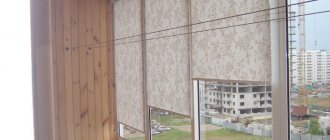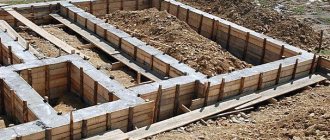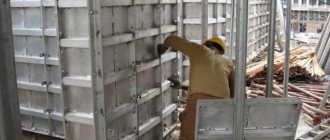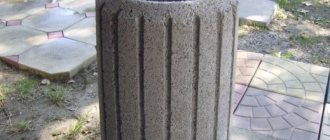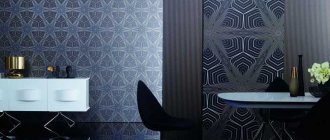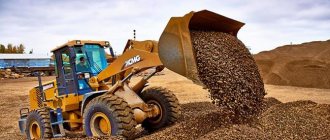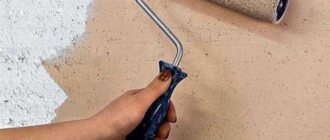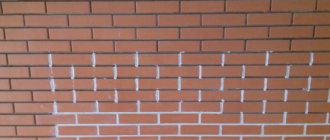Thin laminate: characteristics
The most cost-effective laminate options with a thickness of 6 millimeters can be found on the shelves of online retailers, which are the largest construction supermarkets. Their service life will be a couple of years under normal operating conditions. Such a laminate is unstable to moisture and mechanical stress, reacts with deformation of edges and abrasions, and has weak locking joints that are prone to the formation of cracks. Another disadvantage of thin laminate is the need for careful leveling of the floor, and therefore a large investment of time and consumables. It is useful for laying temporary floors.
Construction professionals recommend using a laminate with a thickness of at least 7 millimeters. It is suitable for bedrooms, offices and dressing rooms - rooms with reduced traffic load.
Advantages and disadvantages of class 32 laminate
Like any material, class 32 laminate has stronger and weaker sides. Let's take a closer look at them.
The advantages include:
- High decorative qualities of the material.
- Easy to install, you can do it yourself.
- Possibility of reuse or partial repair, replacement.
- Strength of the material, resistance to mechanical stress.
- High heat-saving ability.
- Does not require any special care.
- Long service life.
There are also disadvantages:
- The need for a high-quality soundproofing substrate, which complicates installation.
- Demanding on the quality of the subfloor, the coating does not tolerate unevenness or dents.
- The price of the material, although not the highest, is quite noticeable, especially when using samples of material with specific properties or products from well-known brands.
Both the pros and cons of the material must be taken into account during installation or operation in order to increase the service life of the coating and avoid mistakes leading to destruction and loss of material.
Thickened laminate: characteristics
Laminate with a slab thickness of 10-12 millimeters is a high-strength model. It has excellent sound insulation and moisture resistant properties. If heavy objects are dropped, thicker laminate boards are more likely not to leave dents. Thickened laminate flooring is used in hallways, kitchen areas, shops and offices with high traffic. It is adapted for increased motor load.
Laminate with a thickness of 10-12 millimeters, due to the size of the interlocking joints, fits more tightly and is suitable for laying on uneven surfaces. Especially in cases where repairs are done with your own hands without the involvement of construction specialists.
Why do you need to know the thickness of the laminate in advance?
The thickness value affects the following characteristics:
- Strength. As a rule, the strength is influenced by the laminating film made of melamine or acrylic. However, the greater the thickness, the stronger the board will be, and it will be able to withstand loads and vibrations longer.
- Persistence. When choosing a coating, it is worth considering both dynamic and static loads. The former, in fact, are created by residents while walking, the latter are provided with furniture and household appliances. In this regard, it is very important to initially calculate what thickness will be sufficient to withstand the calculated load.
- Insulation. Thermal insulating properties are present in every floor covering, only to varying degrees. If a heated floor system is planned in the room, then it is advisable to give preference to a laminate with a smaller thickness. If such a system does not exist, then a thicker coating will provide the required level of sound and heat insulation.
But the main reason why our users are looking for laminate thickness is to install doors. In 90% of cases, finishing flooring is installed at the final stages of renovation. And to install interior doors, the height adjustment (cutting) of which is carried out in advance, requires knowledge of the exact floor level.
Laminate classes
Laminate 6 and 7 mm thick is produced only in class 32. Laminate with a thickness of 8-10 mm can be 32, 33 and 34 classes, 11 mm and 12 mm only 33 and 34 classes. When choosing a laminate for your apartment, it is better to opt for class 32, as it can cope with loads and is also more environmentally friendly. and class 34 are suitable for more walk-through (kitchen, corridor) and commercial (shop, office) premises.
Which laminate to choose: 8 or 12 mm?
Many Russian buyers are concerned about the question of what is better to buy: 8 or 12 mm thick laminate? In order to find the answer to this question, we will consider the qualities and features of each floor covering.
- Laminate 12 mm is one of the most durable materials. It is designed for installation in commercial and industrial premises with high traffic. The advantages of a 12 mm thick laminate include:
- excellent sound insulation properties;
- resistance to high mechanical loads and abrasion;
- antistatic;
- environmental friendliness;
- in many models - moisture resistance;
- immunity to sudden temperature changes.
- ease of installation due to the presence of a modern locking system.
When used at home, a 12 mm thick laminate has a service life of up to 25 years.
It is important to remember that laying the material on an uneven surface in high-traffic areas is not recommended, as it can be significantly damaged. 8 mm laminate is a thinner floor covering designed for installation in home or commercial premises with average traffic. The material has a relatively low cost, good sound absorption and strength characteristics. In addition, the flooring is easy to install and dismantle thanks to high-quality interlocking connections. If the operating rules are followed, an 8 mm thick laminate will last up to 20 years.
It is important to know!
The thickness of the laminate directly affects its weight. However, many buyers primarily pay attention to other qualities of the flooring, for example, strength and wear resistance. However, it should be remembered that a heavier laminate, when installed with a sound-absorbing underlay, will significantly reduce hum, heel clicking and other annoying sounds. This is especially important when installing flooring in rooms where ideal silence is required (for example, in the bedroom).
Are you still not sure what thickness of laminate you should prefer, 8 or 12 mm? To make the right choice, we recommend paying attention to several more important features:
- Flooring class. This parameter is determined according to the type of room. For apartments or private houses, the best option is 8 or 12 mm laminate of class 32. It has good strength characteristics and a service life of up to 15 years. If you are looking for flooring for commercial or industrial premises, we recommend paying attention to class 33 laminate. This material has a higher cost, but is characterized by increased strength, wear resistance, resistance to mechanical stress and abrasion.
- Moisture resistance. Paying attention to this parameter is especially important if you plan to install laminate flooring in rooms with high humidity, such as, for example, a kitchen. The moisture-resistant coating does not deform when water gets into the joints between the plates thanks to a special wax impregnation.
- Manufacturer country. The cost of the product directly depends on this data. Laminate flooring produced in Belgium or Germany is more expensive than others. This is quite fair, since it is manufactured in accordance with international quality and safety standards, has a service life of at least 25 years, and is characterized by increased strength characteristics. The most budget option is floor coverings made in China.
The catalog of the online store of finishing materials Pliteo.ru presents a wide range of laminate from such major brands as Tarkett, Paul Mayer, Classen, Platinum, Uniqstep, Kronostar, Bode and many others. Delivery is carried out throughout Russia. If necessary, you can use the services of preliminary room measurements and flooring installation.
Types and thickness of substrate
The thickness of the substrate under the laminate is usually 2-3 mm, less often up to 10 mm is used. The underlay allows you to smooth out uneven surfaces and increase the moisture and sound resistance of the floor covering. Two types of substrates have proven themselves well: polystyrene (Tuplex, Profitex) and cork; foamed polyethylene is less commonly used.
It should be borne in mind that the thickness of the substrate, combined with the thickness of the laminated board, can eat up several visually significant centimeters in rooms with low ceilings. As a rule, laying the laminate takes place last; here it is important to ensure that the door leaf opens freely. The use of different types of underlay helps to level out differences in flooring heights in adjacent rooms.
What to choose for your home?
Considering the fact that the likelihood of sand, sand and moisture getting onto the floor surface in the house is higher, due to its close location to the street. It makes sense to buy 12 mm laminate 33 - 34 classes.
It is important to consider the following: if the heating system in the house is built exclusively into the floor screed. And besides it, there are no more heat sources in the form of batteries and radiators. Laying laminate and other wood-based materials is contraindicated. For underfloor heating systems (not heating), 8 mm laminate is more suitable. It takes less energy to warm it up.
A country house often involves interior design that includes plank floors. The wider they are, the more impressive they look over a large area. Laminate 12 mm is most often made with a width of 220-240 mm.
The type of subfloor also matters. In country houses, this is often done using tongue-and-groove boards on joists. Which bends under certain efforts. A thick laminate laid across will reduce this phenomenon.
What affects the thickness of the laminate?
In order to know what laminate thickness to choose, you need to find out what this indicator affects. For example, how thick or thin a given flooring material is depends entirely on its wear resistance, as well as the service life of both the floor covering and the entire floor as a whole. At the same time, laminate, depending on the purposes for which it is intended, is divided into classes, including depending on its thickness. When deciding what thickness of laminate should be in a particular room, you must proceed from numbers from 4 to 12 mm.
Its wear resistance depends on the thickness of the laminate
As for the classes of laminates themselves, there are 6 of them: from 21 to 33. The last class is considered the most wear-resistant, so it is used for finishing commercial premises: shops, bars, cafes. As for household use, it is better to use a laminate with a thickness of no more than 8 mm. This is the 23rd and 31st class.
The question of what is the best laminate thickness arises when choosing a laminate and depends on the quality of the laminate board. So, this indicator affects the strength and stability of the entire floor covering and a number of other parameters, which include:
- sound insulation;
- thermal conductivity;
- strength.
The thickness of the laminate affects the strength and stability of the entire floor covering
At the same time, as already indicated, when resolving the question of what thickness the laminate should be, you should not chase the maximum indicators. This is due to the fact that thicker material will have a higher price, and thick flooring material may not be suitable for the same warm floors. In this case, it is better to select one or another type of laminate based on the specific requirements for a particular room.
Laminate flooring should be selected based on the specific requirements for a particular room.
Modern industry produces several types of laminate and most of them need to be used when installing a cork backing. However, there are also those types that already contain a substrate that does not need to be mounted separately. For example, this type of laminitis includes PVC laminate with a plastic backing. These types of flooring allow you to save money and reduce the time required for repair and finishing work due to the absence of the need to install a substrate.
Important! At the same time, when deciding what thickness of the substrate for the laminate will be optimal, it is also necessary to take into account the requirements of SNiPs.
Depending on them, a thicker or thinner material is selected, as well as a laminate installation method. If you neglect this requirement, the flooring will be installed poorly, which will negatively affect its service life.
Selection of laminate according to SNiP requirements
The question of what thickness of laminate to choose for an apartment is decided depending on its immediate purpose, as well as in accordance with the requirements of Sanitary norms and rules. As for the utilitarian reasons for choosing this floor covering, these are:
- degree of load;
- the thickness of the floor itself;
- quality of preparation of the subfloor.
As for the requirements of SNiP, they are very diverse, but it is necessary to highlight 2 main directions that directly affect what thickness of the laminate should be in a given case. So, before laying it, it is imperative to check the quality of the subfloor in 3 directions, using a rule strip for this. In this case, the rule must be followed that the rack gap at no point should exceed more than 2 mm.
Before laying the laminate, you will need to check the quality of the subfloor in 3 directions, using a strip for this.
In addition, the floor should not have a slope level of more than 0.2%. Usually, these indicators are met by builders even at the stage of installing the rough floor covering, but if these conditions are not met, then when deciding what thickness of the laminate is better, you should take it 1-2 mm thicker than usual or choose a substrate for it that is approximately the same same thickness.
The floor should not have a slope level of more than 0.2%.
After the preparatory activities have been carried out, it will be necessary to calculate the thickness of the required material. To do this, take the amount of discrepancy, divide the subfloor into equal sections, and then lay additional layers of coating so that they reach the thickness you need. In this case, try to use the thinnest possible lining material for correction. Too thick will create air pockets in its thickness.
When deciding what is the best thickness of substrate for laminate, it is also worth considering some of the nuances of this type of finishing work. For example, if you select waterproofing for the floor that is a little thinner than recommended, also lay the underlay thicker by this amount. When using a bitumen-cork substrate, there is no need to use waterproofing, and if you decide to take it from woodworking products, then you will no longer need sound insulation. It is always worth remembering that most manufacturers state the maximum thickness of the laminate substrate is 5 mm, so it is better not to violate this figure.
If you select waterproofing for the floor that is a little thinner than recommended, also lay the underlay thicker by this amount
How thick is laminate?
Laminate is divided into several classes, due to which it is possible to distinguish and indicate the level of wear resistance and the service life of the coating. Its thickness also largely depends on this.
The board is a multi-layer structure:
- The upper one does not affect the thickness, it is only responsible for wear resistance. Presented in the form of a laminating film made on the basis of melamine or acrylic. The purpose of the layer is to protect the lamella from mechanical influences, ultraviolet radiation, and high humidity.
- Decorative layer (located under the top one, also does not have a significant thickness). Presented in the form of foil or paper. It can be made in one tone or with a pattern that exactly imitates the texture of natural materials.
- The main layer is high-density wood board. the reliability of the locking system, the efficiency of installation work, the strength indicators and the practicality of using the coating in domestic and commercial premises depend on it
- The bottom layer is tarred kraft paper, the purpose of which is to protect the panel from a humid environment. It also prevents the possibility of friction between the board and the substrate, which in turn minimizes the premature destruction of the laminate.
Manufacturers offer three main classes of laminate , which vary both in physical and mechanical properties and in thickness. The product class indicates in what conditions the coating can be used, what loads it can withstand, and how long it will last.
So, what you need to know about the class of this flooring:
- Class 32 – varies from 6 to 7 mm , considered a budget coating option. Designed for domestic use in low-traffic areas (bedrooms, dressing rooms), as well as for commercial installation in low-traffic areas. Experts do not recommend laying laminate of this class throughout the entire apartment, as this will lead to the need for repeated repairs in the near future.
- Class 33 - standard coating, 8-10 mm , intended for installation throughout the house, as it can withstand high loads. If such products are selected for an office, then installation is possible in rooms with average traffic.
- Class 34 - laminate with a thickness of 10-12 mm , with enhanced properties. Laying such a coating is possible in corridors and areas with high traffic.
The last option is the most durable. Its strength indicators are superior to other options. Despite the high cost, the products pay for themselves due to durability and preservation of the original appearance for a long time.
But let’s just say from our own experience: for a simple apartment or house, 33 classes are quite enough.

